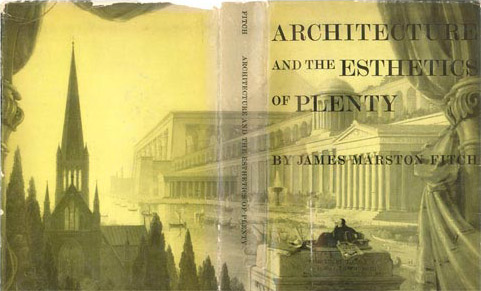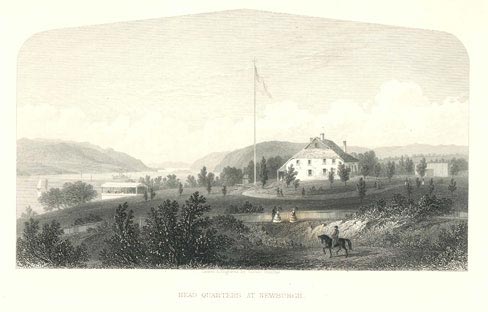Viewpoint
Aesthetic Considerations in Historic Landscape Restoration and Conservation
by Randall Mason
One facile (and therefore suspect) idea about landscape and aesthetics that tends to predominate and needs to be thoroughly debunked is the idea that landscape is only, or mostly, about seeing. James Marston Fitch's body of work helps us to overthrow this idea, or at least give it a good shake. Though the word "landscape"(1) and its varied expressions (painting, gardening, poetry) are indeed rooted in the visual, the modern notion of landscape is animated not by the simplicity of the encompassing, slightly elevated view familiar in the canons of European landscape art (think Rembrandt drawings) but by complexity, contention, unseen processes, or "Multidimensional Totality" (a term of Fitch's).
The scholarship about landscape concepts over the last 10-15 years, sprawling across a dozen disciplines and professions, features a variety of landscape concepts, each helpful to practitioners in some way and yet none totally satisfying. These concepts include landscape as an ecological notion (see the work of Richard Forman and Michel Godron, for instance[2]); as a cultural artifact (J.B. Jackson, Peirce Lewis, Paul Groth[3]); as a set of political relationships (Don Mitchell, Kenneth Olwig[4]); a mode of contemporary art (see the work of Andy Goldsworthy or photographer Edward Burtynsky); or as a model for large-scale design (James Corner, Charles Waldheim[5]). The simple, visual conception of landscape and these complex, cultural notions share something important: they are linked by an aspiration to wholeness—viewing the whole scene, understanding and managing all the natural and cultural processes at work in shaping the inhabited world. We have something to learn from them all, but we can't rely on the "eye" alone. Fitch advocated a multisensory notion of aesthetics (the "multidimensional totality" of experience) though he framed it with behavioral science, not by using the lens of landscape.
Landscape in the broader, more encompassing sense is an important and overlooked root of historic preservation thinking and practice and one of the signal topics Fitch wove in to his scholarship and teaching to create the modern preservation profession. To this end, it seems appropriate to inject a bit of preservation history to contextualize Fitch. In very short order, here are a relevant few points:
The idea of heritage has long been regarded as drawing on both natural and cultural phenomena (i.e., cultural landscapes), and this clear theme in American history finds early articulation by artist Thomas Cole, whose 1836 "Essay on American Scenery" spoke to landscape as both aesthetic resource and national heritage. (Figure 1)
-
The marriage of "scenic and historic preservation" was a cornerstone of American preservation as it emerged as a cognate field of advocacy and scholarship in the last third of the 19th century. (Figure 2) The American Scenic and Historic Preservation Society, formed in New York in the 1890s, epitomized the connection; they worked to protect both historic buildings and natural landscapes. In the 20th century, as Fitch came of age professionally, the preservation field became professionalized and sufficiently specialized that such holistic ways of thinking fell by the wayside.
Natural places, urban squares, and national parks (especially archeological sites) have long been central to the practice of historic preservation as objects of work, and epitomize the field's engagement with all sorts of landscapes.
In recent memory, how have the preservation field (generally), and Fitch (specifically) dealt with competing landscape concepts? It is a mixed bag; two trends are notable.
On one hand, preservationists, including Fitch, have practically tended to treat landscapes like buildings—as discrete, fairly static objects, submitted to the same preservation theories as buildings (which, in turn, come from the art sphere). Examples from Fitch's work include his administration of Central Park, his "Synoptic" approach to architectural preservation of buildings as applied to landscapes in "Curatorial Management of Historical Landscapes," and his appraisal of Roberto Burle Marx.(6) Today, this static approach to landscapes is rightly regarded as unnecessarily reductive, and with the intellectual framework of "cultural landscape" in hand, the preservation field has made significant progress in recognizing and responding practically to the dynamism and changefulness of cultural landscapes.
On the other hand, Fitch deserves great praise from today's practitioners for leading us out of the forest of visually determined landscape notions. The old habit of regarding landscapes as exclusively visual led too often to connoisseurial judgments akin to Justice Potter Stewart's famous maxim about pornography: "I know it when I see it." Against this tendency, Fitch wrote volumes about why a more complex and problematic notion of aesthetics—scientifically approached, appealing to all the senses, to a holistic conception of experience—should drive our thinking about landscapes, about buildings, and about our responsibilities for designing and preserving good environments.
Therefore, Fitch's generous notion of aesthetics—quite congruent with latter-day notions of "cultural landscape"—remains an important part of the intellectual grounding of preservation. In other respects, though, our intellectual grounding needs work: 19th-century naturalistic landscapes are well studied and canonical (Central Park); other types and periods of landscapes (undesigned neighborhoods, Modernist parks, and public spaces) we find more difficult to see and understand. Listen to Alison Hirsch and Michael Van Valkenburgh for ways to understand, preserve, and design landscapes in ways that value their dynamism and their elusiveness.
About the Author
Randall Mason is Associate Professor and Chair of the Graduate Program in Historic Preservation, School of Design, University of Pennsylvania. He may be contacted at rfmason@design.upenn.edu.
Notes
1. The best starting point for exploring the many aspects of "landscape" is "The Word Itself," an essay by the pioneering landscape writer John Brinckerhoff Jackson. See his Discovering the Vernacular Landscape (New Haven, CT: Yale University Press, 1986).
2. Richard T.T. Forman and Michel Godron, Landscape Ecology (New York, NY: Wiley, 1986).
3. J.B. Jackson, Landscape in Sight: Looking at America (New Haven, CT: Yale University Press, 2000); Peirce F. Lewis in The Interpretation of Ordinary Landscapes, ed. Donald W. Meinig (New York, NY: Oxford University Press, 1985); Paul Groth and Todd W. Bressi, eds., Understanding Ordinary Landscapes (New Haven, CT: Yale University Press, 1997).
4. Don Mitchell, The Lie of the Land: Migrant Workers and the California Landscape (Minneapolis, MN: University of Minnesota Press, 1996); Kenneth Olwig, Landscape, Nature and the Body Politic (Madison, WI: University of Wisconsin Press, 2002).
5. James Corner, ed., Recovering Landscape: Essays in Contemporary Landscape Theory (New York, NY: Princeton Architectural Press, 1999); Charles Waldheim, ed., The Landscape Urbanism Reader (New York, NY: Princeton Architectural Press, 2006).
6. "Curatorial Management of Historical Landscapes," Ekistics (July/August 1978): 271 "Landscapes by a Painter," Scope V, no. 1 (1957).


